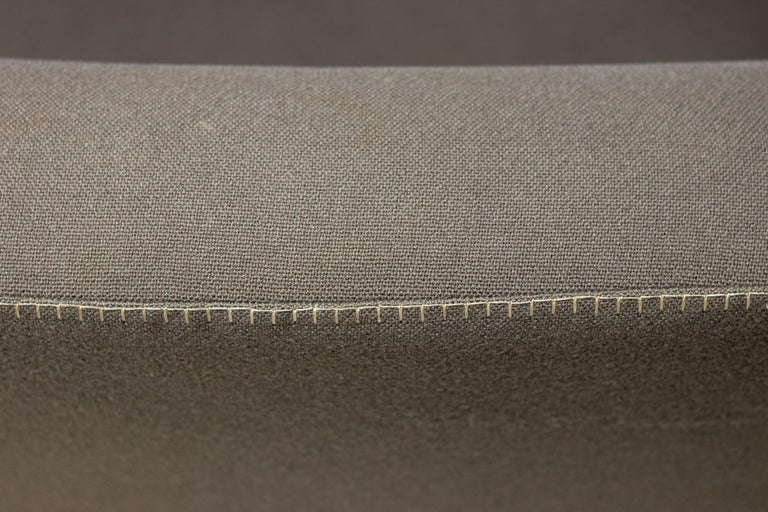Item Description
Utrecht Sofa, designed by Gerrit Thomas Rietveld in 1935. Relaunched in 1988. Manufactured circa 1998 by Cassina in Italy. All original vintage condition. Paint stain at the front as shown in the video, reupholstery strongly recommended. Marked with signature label. Gerrit Rietveld came up with the design for the Utrecht armchair in 1935 while working for the Metz & Co department store in Amsterdam, where his brief was to make a chair for serial production. Taking market needs into account, while privileging a comfortable and relaxing experience, led to the elements of the chair being treated as separate units. As a consequence, the chair became an icon of both the Neoplastic movement (aka De Stijl), and of Rietveld’s experimental vision. About the designer: Gerrit Thomas Rietveld (24 June 1888–25 June 1964) was a Dutch furniture designer and architect. One of the principal members of the Dutch artistic movement called De Stijl, Rietveld is famous for his red and blue chair and for the Rietveld Schro¨der House, which is a UNESCO World Heritage site. In 1934 Rietveld designed a first series of crate furniture, consisting of an armchair, a small bookcase and a small table. These were items for which the appearance was largely dictated by the application of standard lumber size planks for different parts of the furniture. The choice of using standardized Industrial products was motivated by Rietveld’s aim to make furniture production more efficient. The furniture is almost completely built from firewood planks with a width of, circa 15 cm. A constantly recurring, distinctive wide chink is left between the planks. Dry joints connect the components with brass screws, which are left visible. At this time this type of wood and construction method was used for packing crates, hence the name of the series. The radically simple crate furniture was heavily criticized by some contemporaries, because of the lack of traditional workmanship. Rietveld defended his designs by saying that traditionally produced furniture was transported in crates to avoid being damaged. It was obvious to him that the packing material was stronger, and therefore better, than its content. After 1935 much more crate furniture followed, including various chairs, tables and stools. After producing them in his own name for a while, the crate furniture was sold by Metz and Co. under the name ‘weekend furniture.’ Because of the simple appearance and the relatively low price they were most suitable for holiday homes.














